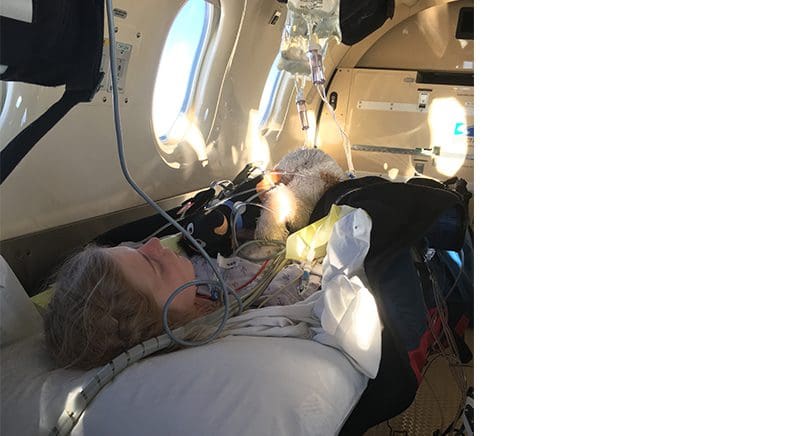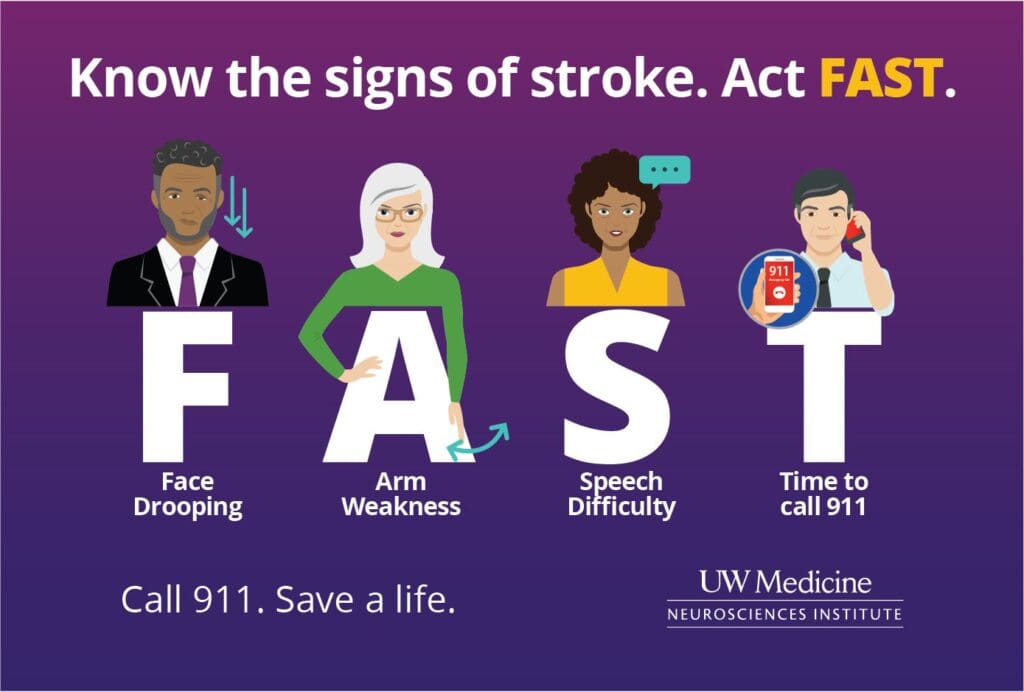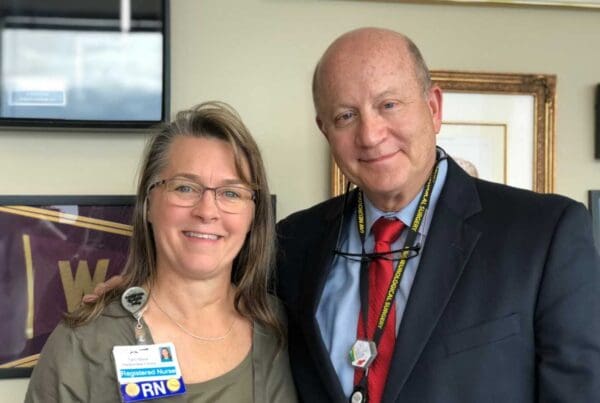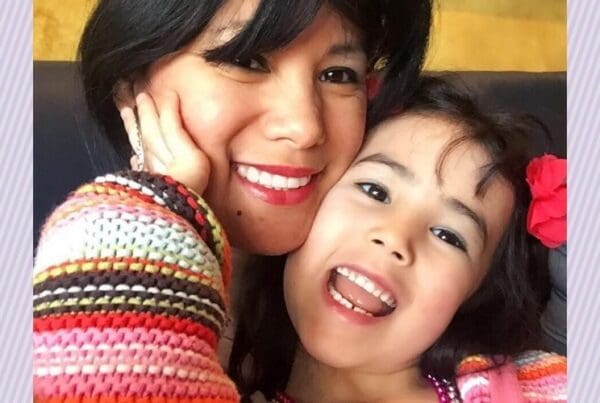Mary Minster’s high school experience looked a little different than that of her peers.
After being misdiagnosed with dehydration in her sophomore year, Mary experienced a massive stroke at 18 and was rushed to Harborview Medical Center for emergency care.
More than just passing out
When Mary was a sophomore in high school, she started to occasionally pass out. While it was concerning at the time, her local doctors in Missoula, Montana, told her that she was just dehydrated, so when her symptoms subsided, she didn’t think much about it.
Then in her senior year, things became much worse.
Mary began passing out more frequently, and when she did, she was exhausted afterward, sleeping for days at a time and relying on her parents to wake her up for school.
“I didn’t feel right,” she recalls. “It felt like it was more than just being dehydrated.”
One week, Mary was so tired she couldn’t go to school at all. Despite her exhaustion, after a week at home she decided to return to school — only to pass out during class. She passed out again that evening and the morning after.
“I went to the hospital and said, ‘You need to figure out what is going on because I can’t keep passing out,’” Mary recalls.
That night, she stayed at her local hospital, where she had a massive ischemic stroke. She had weakness on the left side of her body, her speech slurred and every time she stood up, she would lose consciousness.
After two years of passing out, Mary finally had a diagnosis: She had the autoimmune disease Takayasu arteritis, and every time she passed out, she was actually experiencing mini transient ischemic strokes.
Stroke care at UW Medicine
Takayasu arteritis is an extremely rare disease that causes a narrowing of the large blood vessels that connect the chest to the brain. For Mary, a combination of these inflamed vessels and blood clots was preventing the blood flow to her brain and causing her to have strokes. The disease required specialty care, so Mary, accompanied by her mom, flew to the Comprehensive Stroke Center at Harborview.

Mary on the flight to Harborview.
“It was really tricky because she was so young, and the disease is so rare,” says Malveeka Sharma, MD, MPH, the neurologist who treated Mary. “The ICU, neurology and interventional radiology teams had to come up with a game plan to get her mobilized, treat the strokes and prevent new strokes from happening.”
Luckily, Harborview offers comprehensive stroke care, meaning every provider is an expert on how to recognize and actively and acutely treat someone with a stroke. Mary’s team met daily to collaborate on best treatment options, and to update and educate her family. Sharma started Mary on steroids to reduce the inflammation in her muscles and blood-thinning medications to prevent clots.
Meanwhile, even simple tasks like eating were complicated for Mary because sitting up just 15 or 20 degrees in bed would cause her to pass out.
“I wasn’t myself at that time,” she recalls. “I was scared I wasn’t going to graduate.”
With these extreme symptoms in mind, Sharma and the care team decided to do an angioplasty balloon procedure, a surgery where doctors insert a balloon into a patient’s blood vessel to open it up.
“The surgery can be a high-risk situation because it’s more involved,” Sharma says. “We went in and did it, and Mary made significant gains. It was amazing to see the small gains she was able to accomplish.”
After the surgery, Mary spent three weeks in the ICU, sitting up and standing for the first time in almost a month. Slowly, the team took her off of the medications, and Mary was able to transfer to Seattle Children’s to begin inpatient rehabilitation with physical, occupational and speech therapy.
The road to recovery
While the surgery at Harborview prevented future strokes, Mary still had to complete physical therapy to regain her strength and speech.
“It was hard at the beginning, but I finally just said I need to do this to get better,” she remembers.
Mary spent nine days at Seattle Children’s, motivating herself to complete the therapy earlier than her care team originally anticipated. Afterward, Mary returned home, where she continued physical therapy, attended school part time, went to prom and, just months after suffering a massive stroke, walked at graduation.
“I’m actually back to where I was before my stroke,” Mary says.
Up until the outbreak of COVID-19, Mary volunteered in the ICU at a local hospital in Missoula, and she is currently taking a six-week course on phlebotomy.
“I want to be a phlebotomist because I want to help people,” she says. “So many people helped me, and I want be able to help others.”

Mary and her brother, Brandon, at her high school graduation.
Signs of stroke
Strokes can happen to anyone — including teenagers — though they’re most common in people 55 and older.
The main signs of stroke include sudden onset of weakness or numbness on one side of the body and slurred speech or a speaking impairment, Sharma says. Subtle symptoms include vertigo, general weakness and double vision, though these symptoms are less common.
“Patients with stroke symptoms should seek care immediately by calling 911,” Sharma notes. “The highest risk of having a recurrent stroke is in the weeks after your first one. It’s important to address the stroke and get treatment to prevent another stroke from occurring.”
Sharma also stresses that it is safe to receive care during the COVID-19 pandemic, with hospitals undertaking exhaustive hygiene, distancing and prevention measures. Patients can receive primary stroke care at UW Medical Center – Northwest’s Level I stroke center and comprehensive stroke care at Harborview Medical Center.

Signs of Stroke Graphic.
About the Comprehensive Stroke Center at Harborview
Sharma is a board-certified neurologist at Harborview’s Stroke Clinic and an assistant professor of Neurology. She treated Mary just six months after joining Harborview and describes the experience as an incredible way to begin her work collaborating with the Stroke Clinic team to create positive patient outcomes.
Harborview is a Washington State Department of Health designated Level I stroke center and home of the region’s first Comprehensive Stroke Center.
Certified as a Comprehensive Stroke Center by The Joint Commission, Harborview was the first hospital in Washington state to make the Target: Stroke Honor Roll by the American Heart Association/American Stroke Association.


